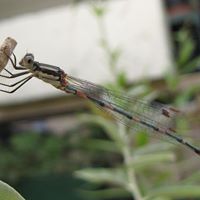The cecum is part of which organ?
The cecum or caecum is an intraperitoneal pouch that is considered to be the beginning of the large intestine. It is typically located on the right side of the body (the same side of the body as the appendix, to which it is joined).
In herbivores, the cecum stores food material where bacteria are able to break down the cellulose. This function no longer occurs in the human cecum, so in humans it is simply a dead-end pouch forming a part of the large intestine.
The term cecum comes from the Latin caecum, literally "blind", here in the sense "blind gut" or "cul de sac".
In dissections by the Greek philosophers, the connection between the ileum of the small intestines and the cecum was not fully understood. Most of the studies of the digestive tract were done on animals and the results were compared to human structures.
Most mammalian herbivores have a relatively large cecum, hosting a large number of bacteria, which aid in the enzymatic breakdown of plant materials such as cellulose; in many species, it is considerably wider than the colon. In contrast, obligatory carnivores, whose diets contain little or no plant material, have a reduced cecum, which is often partially or wholly replaced by the appendix. Mammalian species which do not develop a cecum include raccoons, bears, and the red panda.
More Info:
en.m.wikipedia.org










